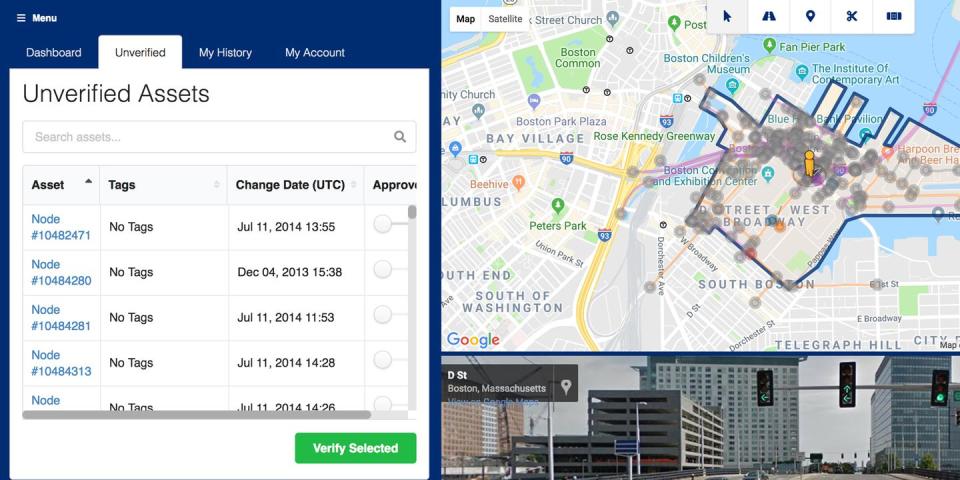Here’s a Way for Self-Driving Cars to Become Better Citizens

Self-driving vehicles won’t operate in a vacuum. They’ll deploy on the streets of major cities, where they hold the promise of transforming the way urban dwellers travel.
Despite a lot of feel-good chatter from automakers and transportation officials about the broad benefits of this new era, municipal leaders have been increasingly worried they’re losing the power to shape decisions on where robotaxis and other automated vehicles are deployed, or even to ensure they understand local traffic ordinances. Pending federal legislation, if enacted, would further weaken cities’ right to determine what happens on their roads.
The traffic analytics company Inrix has designed a way to help cities retain some influence and control.
The company has created a platform on which rules of the road can be programmed by transportation departments for challenges including crosswalks, speed limits, and school zones. These can be incorporated into the way participating vehicles behave. In return, vehicles can send back information on potholes, faded lane markings, and burned-out streetlamps that can be used to plan maintenance.
In an era where shared data is supposed to create cozy relationships between vehicle operators and cities-all ostensibly to benefit the traveling public-this is among the first tangible tools to help reach that goal.
“Self-driving vehicles are stimulating conversations globally, but they are in fact a very local challenge,” said Chris Holmes, senior manager of connected and autonomous vehicle research at Jaguar Land Rover. “Road conditions and layouts can vary drastically over a matter of miles, and so it is vital that self-driving is facilitated collaboratively.”
On Board with Road Rules Platform
Seven cities and road authorities and four self-driving-vehicle operators have agreed to support the platform, called Inrix AV Road Rules. They include departments of transportation in Austin, Texas; Portland, Maine; and Cambridge and Boston, Massachusetts, plus the regional authority that oversees transportation around Las Vegas and transportation departments in Scotland and the United Kingdom.
On the business side, participants include Jaguar Land Rover, May Mobility, nuTonomy, and operators using Renovo’s Aware platform. More potential partners could be announced later this year.
The platform seems like a potential sweet spot for Inrix. The company has served as a go-between for public-transportation departments and vehicle and fleet operators for more than a decade, as a provider of real-time traffic information and transportation analytics. Last year, the company used its repository of historical information to measure the cities where autonomous vehicles had the potential to deliver the biggest benefits, a study that revealed some unexpected results.
In May, the company partnered with JLR to establish a pilot program that provides information to autonomous cars to help them navigate stretches of road that are known to be complicated, such as roundabouts. Based in the U.K., that project adds historical, real-time, and predictive context-such as how fast drivers usually travel in a particular area-as an additional input to the data collected on the road and obstacles collected by onboard sensors.

Greater Boston: A Testing Hotbed
The new platform focuses on what Inrix calls “ground truth,” verified guidelines for the rules of operation in a given area that can be programmed by a city department of transportation.
The Greater Boston area may be a notable early litmus test for the platform, and not only because inaugural partners include the city transportation department, transportation officials from nearby Cambridge, Massachusetts, and nuTonomy, which was recently cleared to test on all Boston streets. An October 2017 study by the Boston Consulting Group and the World Economic Forum, which examined the implications of autonomous-driving deployments in Boston, found that while autonomous vehicles could bring benefits-most notably, a massive reduction, from 16 to 50 percent, in the street space needed for parking-there were unexpected pitfalls as well. There’s a possibility that automated vehicles are at risk of “becoming victims of their own success,” according to the report, increasing the demand for vehicles by making transportation cheaper and more convenient.
The ramifications were striking for Boston’s downtown. While travel times and volume fell for the broader region, the researchers found travel time may increase in downtown Boston by more than 5 percent as travelers use more vehicles instead of mass transit to get around. Overall, researchers found a 14 percent shift away from mass-transit utilization.
John Moavenzadeh, head of mobility industries at the World Economic Forum, presented the findings at the recent Automated Vehicles Symposium in San Francisco. They signal that policies will play a central role in promoting benefits and avoiding unintended consequences.
“The bottom line is that these findings are based on all things being equal with no direct intervention or policy incentives from the city,” Moavenzadeh said. “The question is, ‘What levers can cities pull so they don’t get caught up with these negative outcomes of [automated vehicles] in their city core?’ ”
Broad policy measures could include pricing options, a bike-friendly infrastructure, and specific automated-vehicle corridors. Should Boston or other cities ever want to consider something like the latter, they’d need to execute that policy on a street-by-street level. Something like the Inrix platform could help make that happen.
Some Cities Are Better Suited for Self-Driving Cars Than Others, Study Finds
Inrix OpenCar Wants to Make Infotainment Obsolescence Obsolete
Coming to the Streets of Boston: nuTonomy’s Autonomous Renault
While there’s much unknown about the way cities and vehicle operators will interact in the self-driving future, consider this a concrete step toward whatever awaits.
('You Might Also Like',)

 Yahoo Autos
Yahoo Autos 